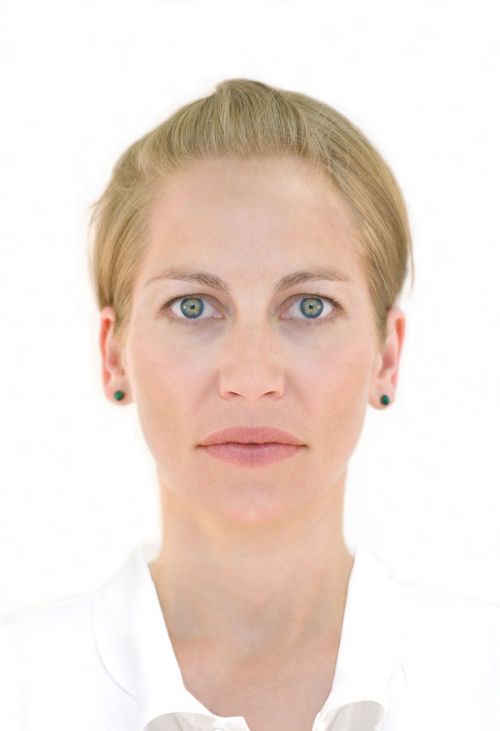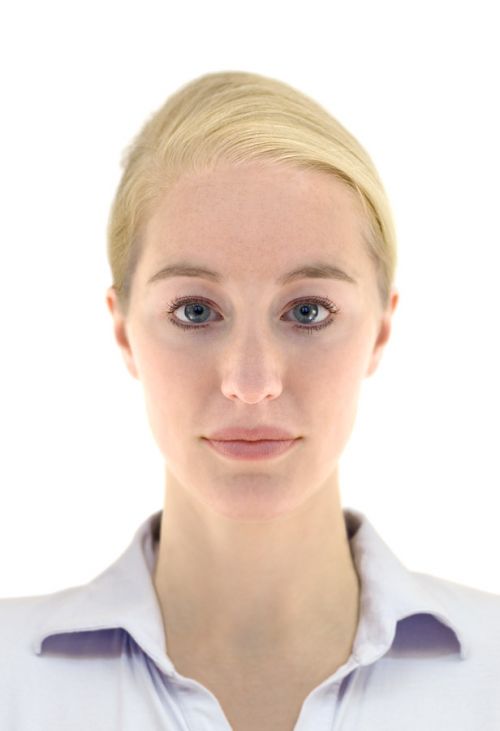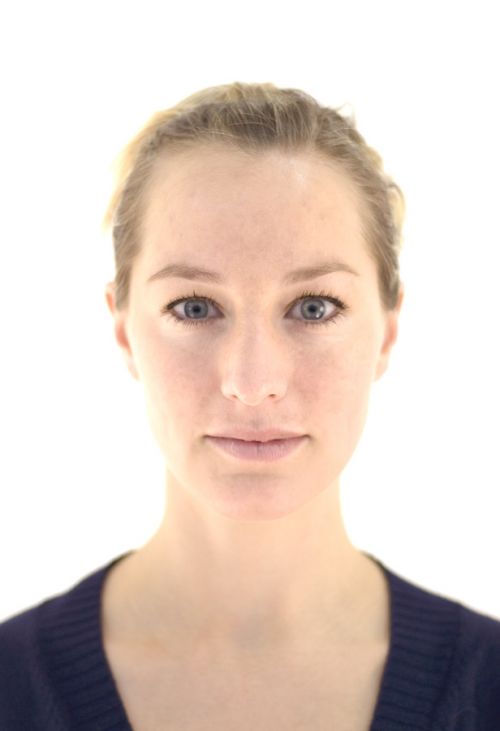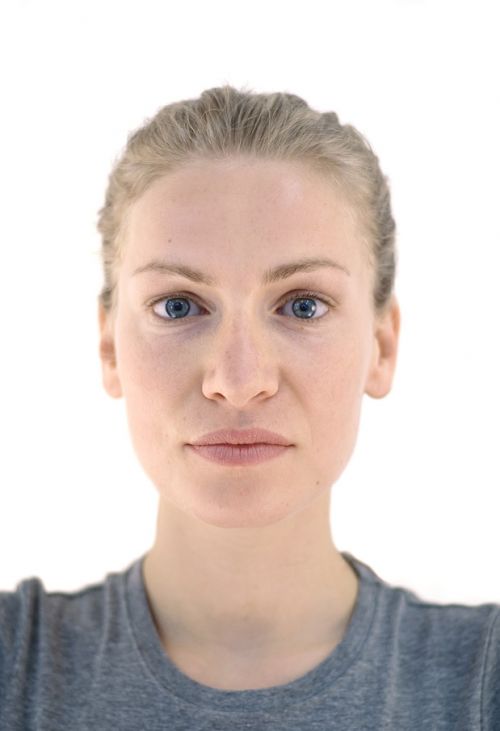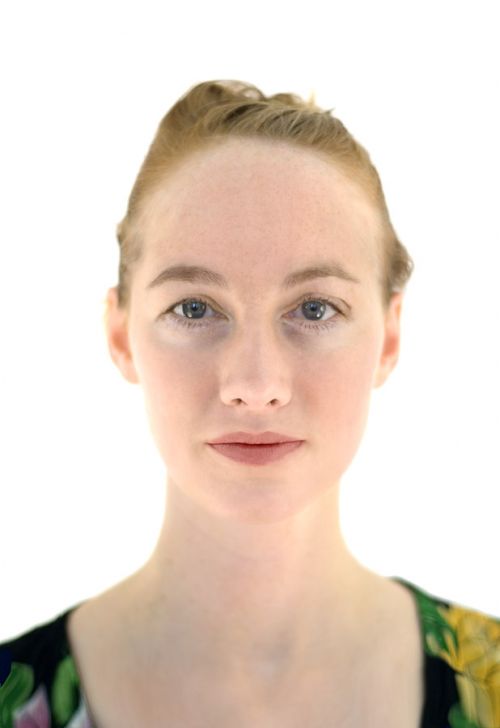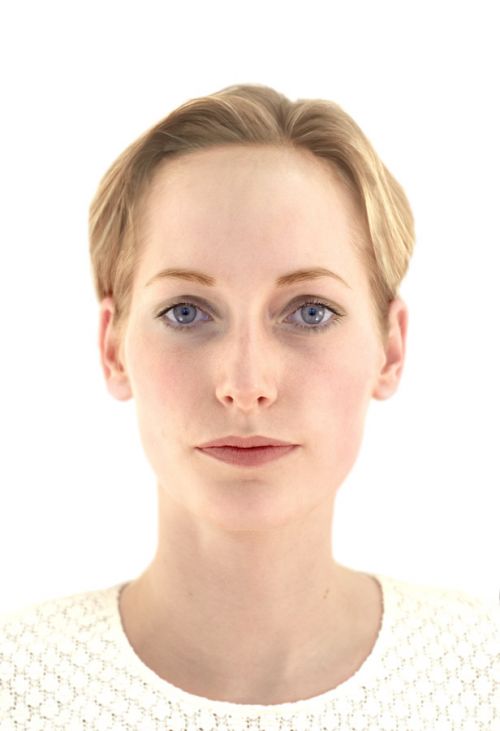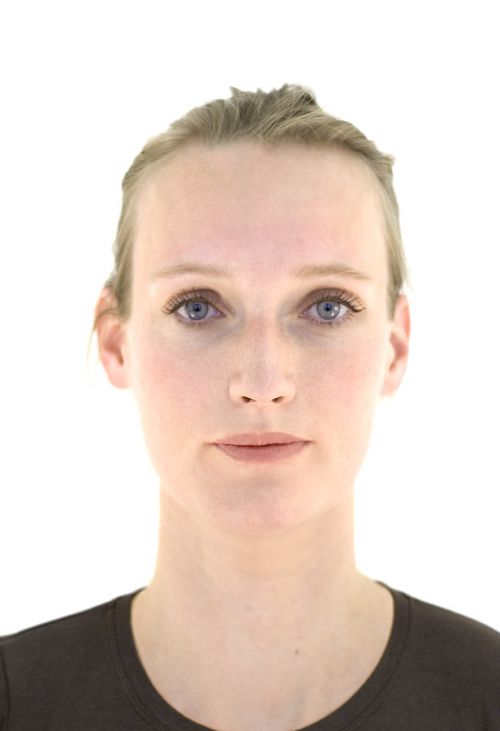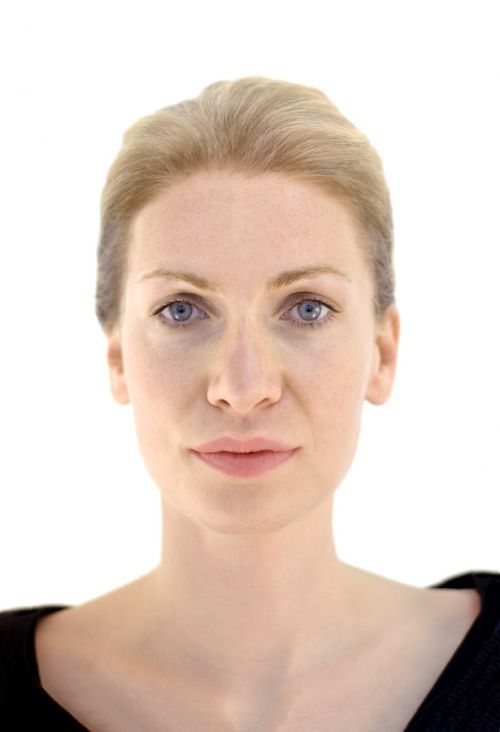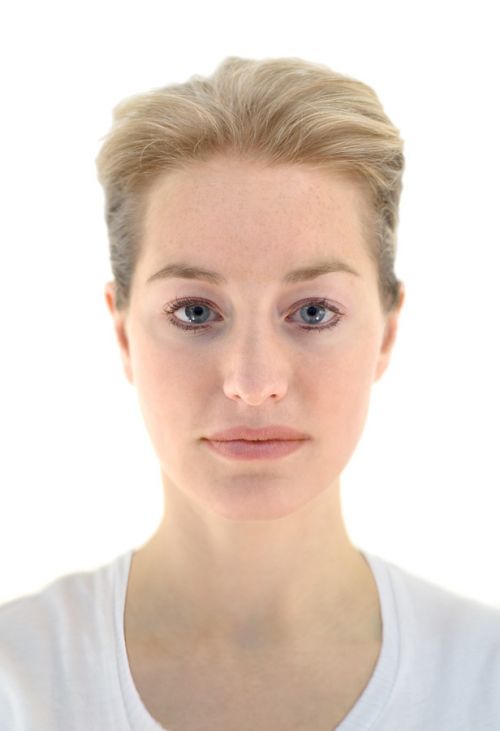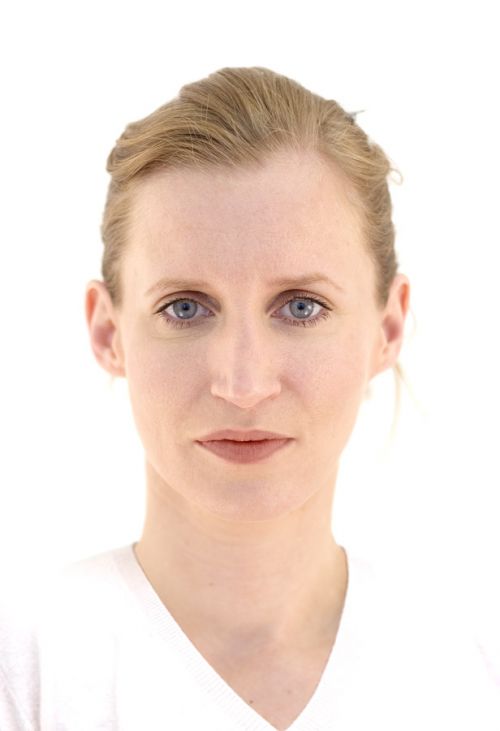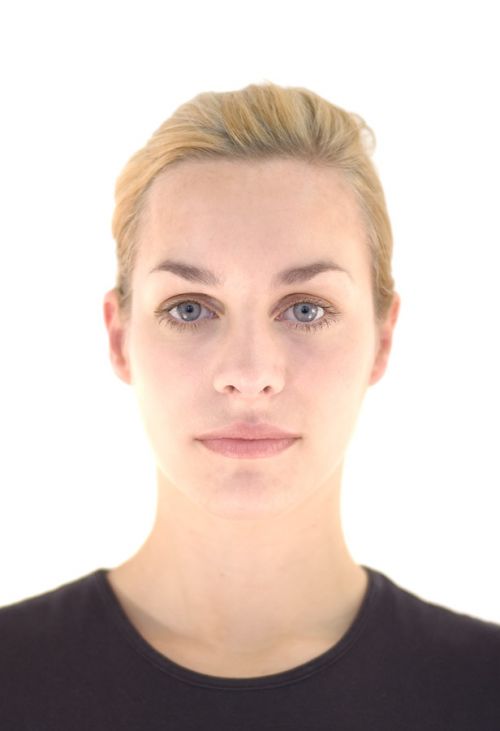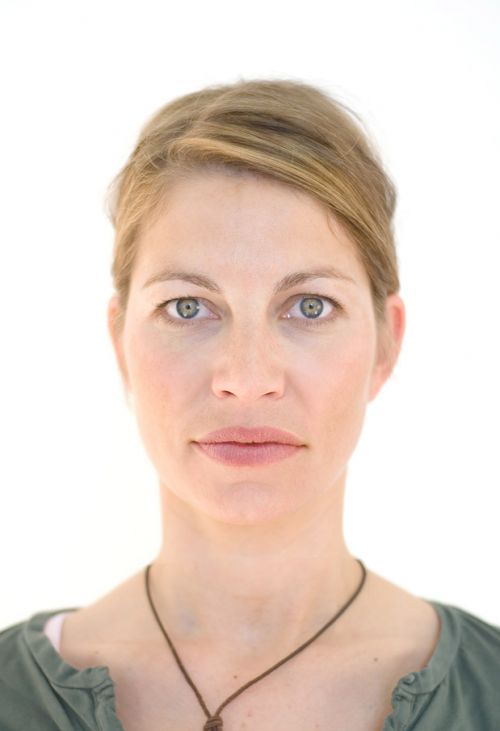Different Persons
They might be sisters. Only they aren’t. They aren’t even distantly related, and we may assume they aren’t related by marriage. Nevertheless, the similarity between the twelve women is astonishing. At a cursory glance, each one could be the same woman, just differently made up. Yet Ralf Peters calls this series of portraits Different Persons. They gaze at the camera seriously, expressionlessly, and open-eyed (pp. 127–138). Anyone finding a hint of a smile on their full, well-formed lips would undoubtedly be deluding themselves. On the other hand, couldn’t it be that perceiving the trace of a smile is precisely what comes from looking intently at these images?
For it is only by looking intently that the differences between these frontal portraits emerge. And the longer one gazes at the faces, the more distinct they become. The first cursory impression really only confirms certain preconceptions; like the one that middle-class women of a certain age look the same because they aspire to an identical ideal of beauty. At the end of her career, the great portrait photographer Liselotte Strelow bemoaned the fact that “they don’t have faces any more.”
According to many cultural critics, it is a type of look promoted by the commercial media, advertising, and the fashion, cosmetics, and plastic surgery industries. Visual differences, they claim, are being homogenized in the interests of a standardized ideal. These industries produce images aimed at deluding people into thinking they offer an effective antidote to disappointment, old age, and death; in reality, though, they only hold up a mirror to themselves. They serve first and foremost to oil the wheels of an economic system that functions by breaking the promises it makes. Anyone looking more closely may well derive insights of this kind from these typified portraits, especially because, in constructing these pictures, Peters has used a number of devices to encourage such insights.
He evidently used a widely held ideal of physical beauty as the basis for selecting his models. It seems most likely that he based his criteria on faces that appear in popular films, television commercials, fashion magazines, and clothes and cosmetics advertisements, using these to construct his image of a “dream woman.” It is a woman with plucked eyebrows, perfect skin, clear eyes, made to look very large by the illumination of flash, curved lips, neither too thin nor too thick, light-colored hair in various shades of blonde, a narrow, regular nose, a well-rounded chin, and an oval face—who actually dreams of this ideal? No doubt men do. But evidently women do as well. It is reasonable to suppose that many of them strive to emulate this image of perfection.
Despite these common features that clearly conform to a schematic type, only the most distracted viewer could overlook the tell-tale signs of the individual person. The differences betray themselves in nuances. The color and position of the eyes, the way the hair falls, the jewelry or lack thereof, the outer clothing. While Peters found most of the young women at the kind of modeling agencies you’d have expected him to use, he also approached a couple of them on the street and persuaded them to pose for a photo shoot. On closer inspection, though, it becomes difficult to reduce the faces in the photographs to visual clichés. Indeed, the images distinctly diverge from ideal images of femininity from the past. For which glamour magazine today would have on its cover the Mona Lisa, the beautiful woman with the enigmatic smile? Her face is too round, her nose too large.
The photographer’s attitude to the problem of his models’ immanent subjectivity is no less ambivalent. By entitling the group of works Different Persons, and by giving each individual picture its subject’s first name, Peters emphasizes the actual differences between the women who appear in the photographs. Nevertheless, it cannot be denied that his approach to selecting and taking photographs is based on a very narrow definition of what portraiture is.
Many of the less conspicuous details point towards what he is really aiming at; they include the uniform arrangement of the hair, combed back tightly from the forehead in a way that ignores the kind of hair-do they actually have. In each case, the rigorous frontal positioning of the model, her prominent central placement against a light background, and the calibration of the quadrants so that they intersect just below the top of the neck, is the result of careful aesthetic decisions made by the photographer. At the same time, though, it is—paradoxically enough—the visual outcomes of these decisions that maintain the schematic character of these faces against their claims to individuality.
By emphasizing one of these elements without neglecting the other, Peters makes us more aware that looking is a process—one that occurs so naturally in human beings that it is largely unconscious. In the act of looking at his pictures, or more precisely, in the act of what Roland Barthes calls “studium,” our gaze becomes reflective, distinguishing it from distracted forms of seeing and enabling it to become receptive to the work. Clearly the way in which the images are able to switch between being portraits of models and portraits of individuals, a deliberate effect of the photographer’s apparently indecisive approach, enables us as viewers to strip the natural of its naturalness, and see the familiar as something strange, as it were, transforming it into what Max Imdahl calls a “seeing seeing.”
In this respect, it could be that the real “subject” of these portraits is not only a particular kind of photograph but the complex phenomenon of visual perception, which becomes itself an object of perception in the process of conscious seeing. For this reason, Peters’s aesthetic strategy isn’t one of possible recognition; he isn’t aiming at a portrait-likeness, however you might want to define it, but at exploring the possibilities of the manifest ambiguity of portraits, which are more a screen onto which the viewer projects than a true likeness of the photographed model.
This impression is confirmed by the series of images that Peters has made, which offer a view out of an imaginary window onto the world outside. This is especially the case if you compare it with the portraits of the twelve “different” women. For it immediately becomes clear that they are related. To put it another way: the one group of works complements the other. The way they interrelate broadens the field of what might potentially become visible.
